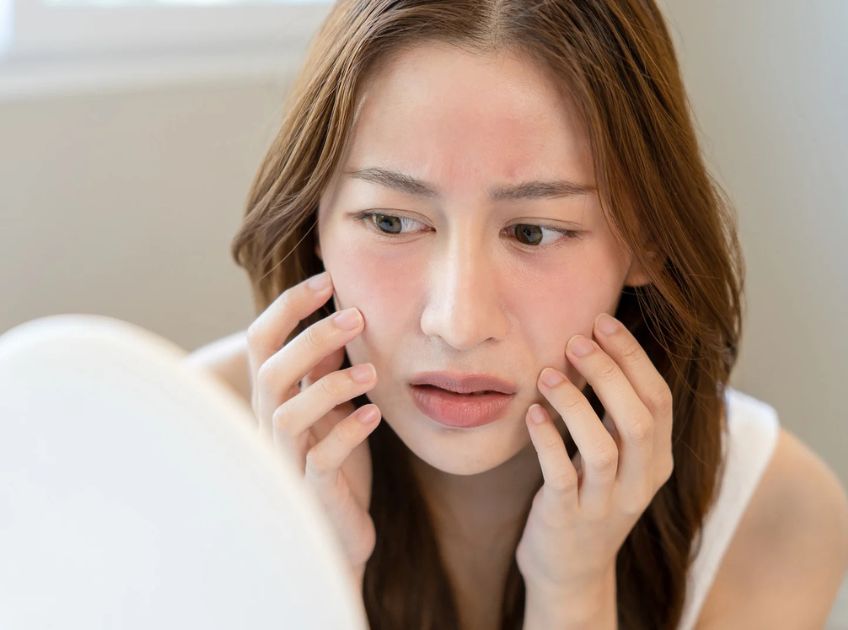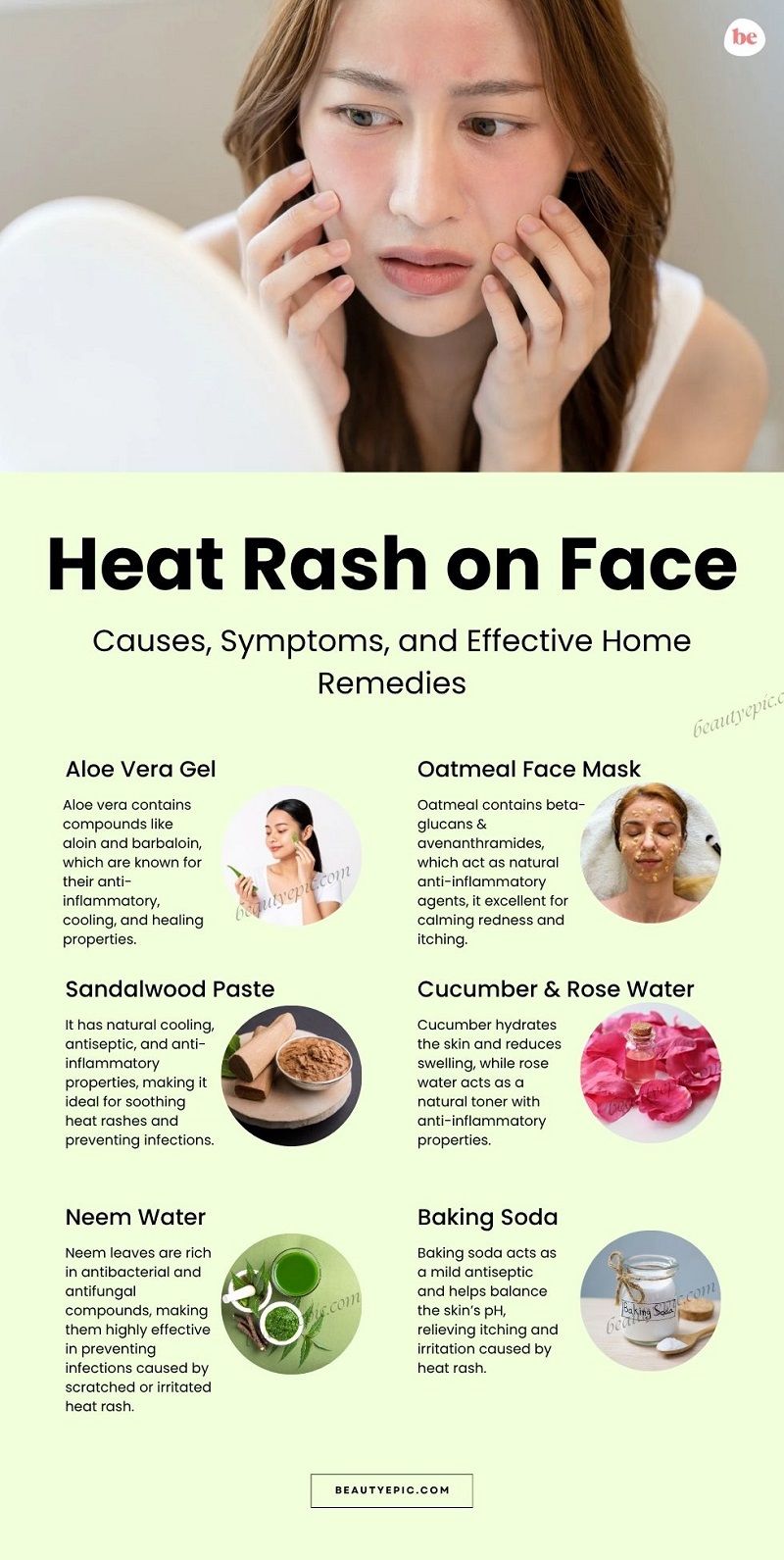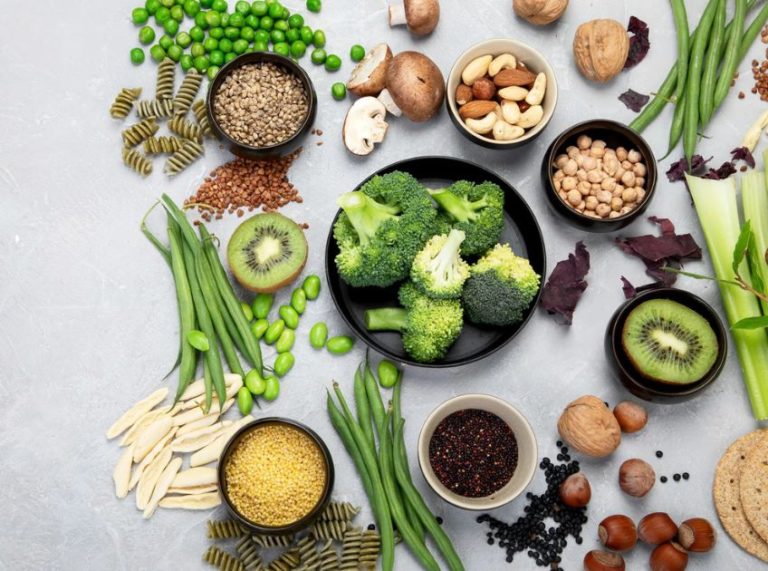
Important: This article is for informational purposes only. Please read our full disclaimer for more details.
Heat rash, also known as prickly heat or miliaria, is a common skin condition that occurs when sweat glands become blocked, trapping perspiration under the skin. While it can affect any part of the body, the face is particularly vulnerable because of constant sun exposure, humidity, and makeup use, which can clog pores.
Heat rash on the face often appears as tiny red bumps, itchiness, stinging, or a prickly sensation. It usually happens in hot, humid climates or after intense workouts, but can also occur due to tight clothing, heavy creams, or poor air circulation.
The Science Behind Heat Rash: Why It Happens
Heat rash develops when sweat ducts become clogged, preventing sweat from evaporating. This trapped sweat leads to inflammation, redness, and irritation.
According to a study published in the Journal of the European Academy of Dermatology and Venereology (2017), heat rash is classified into three types based on severity:
- Miliaria crystallina – tiny, clear blisters with no inflammation
- Miliaria rubra – red, itchy bumps with a prickly sensation
- Miliaria profunda – deeper, flesh-colored bumps causing discomfort
The face is highly prone because sweat glands here are dense, and makeup, sunscreens, and pollution can worsen blockage (1)(2).
Environmental factors like high humidity, heat, and excessive sweating are the biggest triggers, but infants, athletes, and people with oily skin are more susceptible.
Symptoms of Heat Rash on the Face
Recognizing the early signs of heat rash is crucial for faster healing. Common symptoms include:
- Small red or pink bumps
- Itching or a prickling sensation
- Mild swelling or inflammation
- Tiny blisters filled with clear fluid
- Burning sensation when exposed to heat
- Increased discomfort in humid conditions
If left untreated, heat rash can sometimes lead to skin infections, especially if blisters burst and bacteria enter.
Effective Treatments for Heat Rash on the Face
1. Keep Your Face Cool and Sweat-Free
- Move to an air-conditioned or well-ventilated environment.
- Avoid direct sun exposure when possible.
- Use cold compresses on affected areas to soothe irritation.
2. Switch to Lightweight Skincare
- Avoid heavy creams, oils, and greasy sunscreens.
- Opt for gel-based moisturizers and non-comedogenic sunscreens.
- Always cleanse your face gently to remove sweat, dirt, and excess oil.
3. Over-the-Counter Treatments
- Calamine lotion: Soothes itchiness and reduces redness.
- Aloe vera gel: Cools, hydrates, and speeds up healing.
- Hydrocortisone cream (only if recommended by a dermatologist): Helps with severe inflammation.
Home Remedies to Soothe Heat Rash Naturally
Heat rash on the face can be uncomfortable and irritating, but you can calm your skin and speed up healing using simple, natural remedies. These solutions are gentle, effective, and backed by skincare experts. Below are seven powerful home remedies that can help reduce redness, swelling, and itching while keeping your skin cool and healthy.
1. Aloe Vera Gel – The Ultimate Skin Soother
Why it works: Aloe vera contains compounds like aloin and barbaloin, which are known for their anti-inflammatory, cooling, and healing properties. It reduces redness, soothes irritation, and hydrates the skin naturally.
How to use it
- Take pure aloe vera gel (preferably fresh from the plant).
- Apply a thin layer to the affected areas.
- Leave it on for 15–20 minutes.
- Rinse gently with cool water and pat dry.
Pro Tip: Store aloe vera gel in the refrigerator for an extra cooling effect.
Precaution: Avoid aloe vera gels with added fragrances or alcohol, as they may worsen irritation.
2. Cold Compress – Instant Relief from Itching
Why it works: Cold therapy reduces inflammation, redness, and prickly sensations by constricting blood vessels and cooling down overheated skin.
How to use it
- Wrap a few ice cubes in a soft cotton cloth.
- Apply it gently on the affected area for 5–10 minutes.
- Repeat this 2–3 times daily.
Pro Tip: You can also soak a clean washcloth in chilled rose water or cucumber-infused water for extra soothing.
Precaution: Never apply ice directly to the skin, as it may cause frostbite or irritation.
3. Oatmeal Face Pack – Calm, Soothe, and Heal
Why it works: Oatmeal contains beta-glucans and avenanthramides, which act as natural anti-inflammatory agents, making it excellent for calming redness and itching.
How to use it
- Blend 2 tablespoons of oats into a fine powder.
- Mix with cold water or chilled milk to form a paste.
- Apply it evenly to the face and leave it on for 15 minutes.
- Rinse gently with cool water.
Pro Tip: For added benefits, mix in a teaspoon of honey for hydration.
Precaution: Always use colloidal oatmeal or finely ground oats for a smooth, non-abrasive texture to avoid irritation.
4. Cucumber and Rose Water Cooling Mask
Why it works: Cucumber hydrates the skin and reduces swelling, while rose water acts as a natural toner with anti-inflammatory properties. Together, they cool overheated skin and restore its natural balance.
How to use it
- Peel and blend half a cucumber into a smooth puree.
- Mix it with 2 teaspoons of rose water.
- Apply this cooling mask to your face and leave it for 15 minutes.
- Rinse off with cold water.
Pro Tip: Refrigerate the mixture before application for a refreshing cooling effect.
Precaution: Always choose pure rose water without artificial additives for sensitive skin.
5. Sandalwood Paste – Nature’s Skin Cooler
Why it works: Sandalwood has natural cooling, antiseptic, and anti-inflammatory properties, making it ideal for soothing heat rashes and preventing infections.
How to use it
- Mix 1 teaspoon of sandalwood powder with rose water or cold milk to make a paste.
- Apply it gently to the affected area and let it dry.
- Rinse with cool water.
Pro Tip: Use pure sandalwood powder for best results, as synthetic ones may irritate.
6. Neem (Indian Lilac) Water – The Herbal Healer
Why it works: Neem leaves are rich in antibacterial and antifungal compounds, making them highly effective in preventing infections caused by scratched or irritated heat rash.
How to use it
- Boil a handful of neem leaves in water for 10 minutes.
- Let the water cool completely.
- Use it as a gentle facial rinse twice daily.
Pro Tip: You can also blend neem leaves into a smooth paste and apply directly to the rash for quicker relief.
Precaution: Avoid using concentrated neem oil directly on the face—it may be too strong and cause irritation.
7. Baking Soda Soothing Dab (For severe itching only)
Why it works: Baking soda acts as a mild antiseptic and helps balance the skin’s pH, relieving itching and irritation caused by heat rash.
How to use it
- Mix 1 teaspoon of baking soda with 2 teaspoons of cool water.
- Dip a cotton ball and gently dab it on the rash.
- Leave it on for 5 minutes and rinse thoroughly.
Pro Tip: Use this method only occasionally and never on broken or highly sensitive skin.
Tips to Prevent Heat Rash on the Face
- Stay in cool, well-ventilated spaces during hot and humid weather.
- Use lightweight, gel-based skincare instead of heavy creams.
- Keep your face clean and sweat-free by washing gently twice a day.
- Apply non-comedogenic sunscreen to prevent clogged pores.
- Stay hydrated by drinking at least 2–3 liters of water daily.
Frequently Asked Questions (FAQ’S)
1. How long does heat rash on the face take to heal?
A. Mild cases usually clear up within 2–3 days with proper care, but severe cases may take a week or more.
2. Can makeup make heat rash worse?
A. Yes. Heavy foundations, creams, and sunscreens can clog pores, trap sweat, and worsen irritation. It’s best to avoid makeup until the rash heals.
3. When should I see a dermatologist?
A. If you notice spreading redness, pus-filled blisters, fever, or persistent itching, consult a dermatologist immediately—it may indicate an infection or a more severe condition.
Heat rash on the face is common, especially during hot, humid weather, but the good news is—it’s treatable and preventable. By keeping your skin cool, clean, and sweat-free, using lightweight skincare, and trying natural home remedies like aloe vera, oatmeal, and cucumber, you can soothe irritation and speed up healing.
















